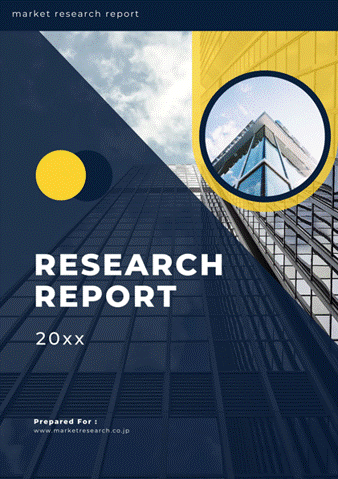 | • レポートコード:MRC2108A285 • 出版社/出版日:Mordor Intelligence / 2021年7月 • レポート形態:英文、PDF、150ページ • 納品方法:Eメール(受注後2-3営業日) • 産業分類:建築 |
| Single User | ¥555,000 (USD3,750) | ▷ お問い合わせ |
| Team User | ¥629,000 (USD4,250) | ▷ お問い合わせ |
| Corporate License | ¥1,036,000 (USD7,000) | ▷ お問い合わせ |
• お支払方法:銀行振込(納品後、ご請求書送付)
レポート概要
| Mordor Intelligence社は、プレハブ住宅のヨーロッパ市場規模が、2021年から2026年の間に年平均約4.5%成長すると予測しています。本調査レポートは、ヨーロッパのプレハブ住宅市場について調査・分析し、イントロダクション、調査手法、エグゼクティブサマリー、市場洞察、市場動向、種類別分析、国別分析、競争状況、市場機会/将来の見通しなどを掲載しています。 |
Europe’s prefabricated housing market is expected to grow at a CAGR of approx 4.5% during the forecast period. The market is driven by the factors such as space constraints in cities, high demand for turnkey solutions, high profitability, increased demand for high-end and customized buildings. As the demand for higher quality sustainable housing increasing throughout the region, the market is growing, with the United Kingdom and Germany accounting for the largest share.
The outbreak of the COVID-19 pandemic has brought serious uncertainty to suppliers and contractors throughout the European construction industry. Due to lockdown and restrictions, several construction companies closed their projects. The use of additive manufacturing in Europe is expected to provide tremendous support to the prefabricated housing construction market. The demand for prefabricated materials for residential decoration is also expected to provide significant opportunities in the future, thereby driving the market growth during the forecast period.
Sweden is one of the most developed markets for prefabricated housing construction in the world with a high penetration rate. Sweden is the leading country in the implementation of panelized building systems, where around 80% of its housing sector uses structures and elements prefabricated in factories.The emergence of turnkey solutions is another major factor driving market growth in this region, especially in Switzerland, Northern Europe, and the United Kingdom. Germany, Northern Europe, and the United Kingdom dominate the European prefabricated housing construction market share.
Key Market Trends
Demand of Prefabricated Houses is Increasing in Sweden
Sweden is widely regarded as a leading country of offsite manufacturing, leading the world in terms of the sheer number of panelized single dwelling residences, which represent over 80 percent of the country’s overall housing market. Sweden has the world’s highest percentage of factory-built wooden houses in the world, mainly using closed wall panels and the trend is set to continue, with contemporary market stressors providing grist to the prefab mill.
Sweden is currently undergoing a major building boom; with skills shortages in traditional construction trades placing further pressure on the sector, prefab houses are in high demand. Among the myriad influences that have led to Sweden’s dominance of the offsite space in terms of skills, expertise, and industry structure, the most frequently cited factors are the country’s abundance of slow-growing, premium quality timber and its uniquely challenging climatic conditions.
Turnkey Projects will soon Surpass Floor Covering Solutions in Germany
In terms of building types, the importance of wood construction is increasing. This is because people are paying more and more attention to sustainability factors. Sustainable construction is becoming more and more important for builders, and wood as a renewable raw material supports this trend. Although most houses are still sold in the form of floor-to-ceiling buildings, there is a clear trend of turnkey projects. In the long run, the housing market segment has the least growth, although there are still manufacturers that specifically cater to this segment, such as Massa or ProHaus.
Competitive Landscape
The market is highly competitive with none of the players occupying the major share. The market is fragmented, and the market is expected to grow during the forecast period due to the increase in the prefab construction building investments and upcoming major projects in the country and other few factors are driving the market. Prefabricated building systems and construction hold high potential to improve the efficiency and performance of the European construction industry in a more sustainable sense. Companies are using environmentally friendly materials and manufacturing techniques to differentiate their products from competitors. Major players are Skanska AB, Peab AB, Swietelsky AG, Laing O’Rourke, and Bouygues Batiment International.
Reasons to Purchase this report:
- The market estimate (ME) sheet in Excel format
- 3 months of analyst support
1 INTRODUCTION
1.1 Study Assumptions
1.2 Scope of the Study
2 RESEARCH METHODOLOGY
2.1 Analysis Methodology
2.2 Research Phases
3 EXECUTIVE SUMMARY
4 MARKET INSIGHTS
4.1 Current Market Scenario
4.2 Technological Trends
4.3 Insights on Supply Chain/Value Chain Analysis of the Prefabricated Housing Industry
4.4 Cost Structure Analysis of the Prefabricated Housing Industry
4.5 Impact of COVID-19 on the Market
4.6 Insights on Different Types of Materials used in Prefabricated Housing Construction
5 MARKET DYNAMICS
5.1 Drivers
5.2 Restraints
5.3 Opportunities
5.4 Porter’s Five Forces Analysis
5.4.1 Bargaining Power of Suppliers
5.4.2 Bargaining Power of Consumers / Buyers
5.4.3 Threat of New Entrants
5.4.4 Threat of Substitute Products
5.4.5 Intensity of Competitive Rivalry
6 MARKET SEGMENTATION
6.1 By Type
6.1.1 Single Family
6.1.2 Multi Family
6.2 By Country
6.2.1 Germany
6.2.2 United Kingdom
6.2.3 France
6.2.4 Rest of Europe
7 COMPETITIVE LANDSCAPE
7.1 Overview
7.2 Company Profiles
7.2.1 Skanska AB
7.2.2 Peab AB
7.2.3 Swietelsky AG
7.2.4 Laing O’Rourke
7.2.5 Bouygues Batiment International
7.2.6 Derome AB
7.2.7 Wolf Holding GmbH
7.2.8 DFH Group
7.2.9 Containex
7.2.10 Portakabin Ltd.*
8 MARKET OPPORTUNITIES AND FUTURE TRENDS
9 APPENDIX
9.1 Marcroeconomic Indicators (GDP breakdown by sector, Contribution of construction to economy, etc.)
9.2 Key Production, Consumption,Exports & import statistics of construction Materials